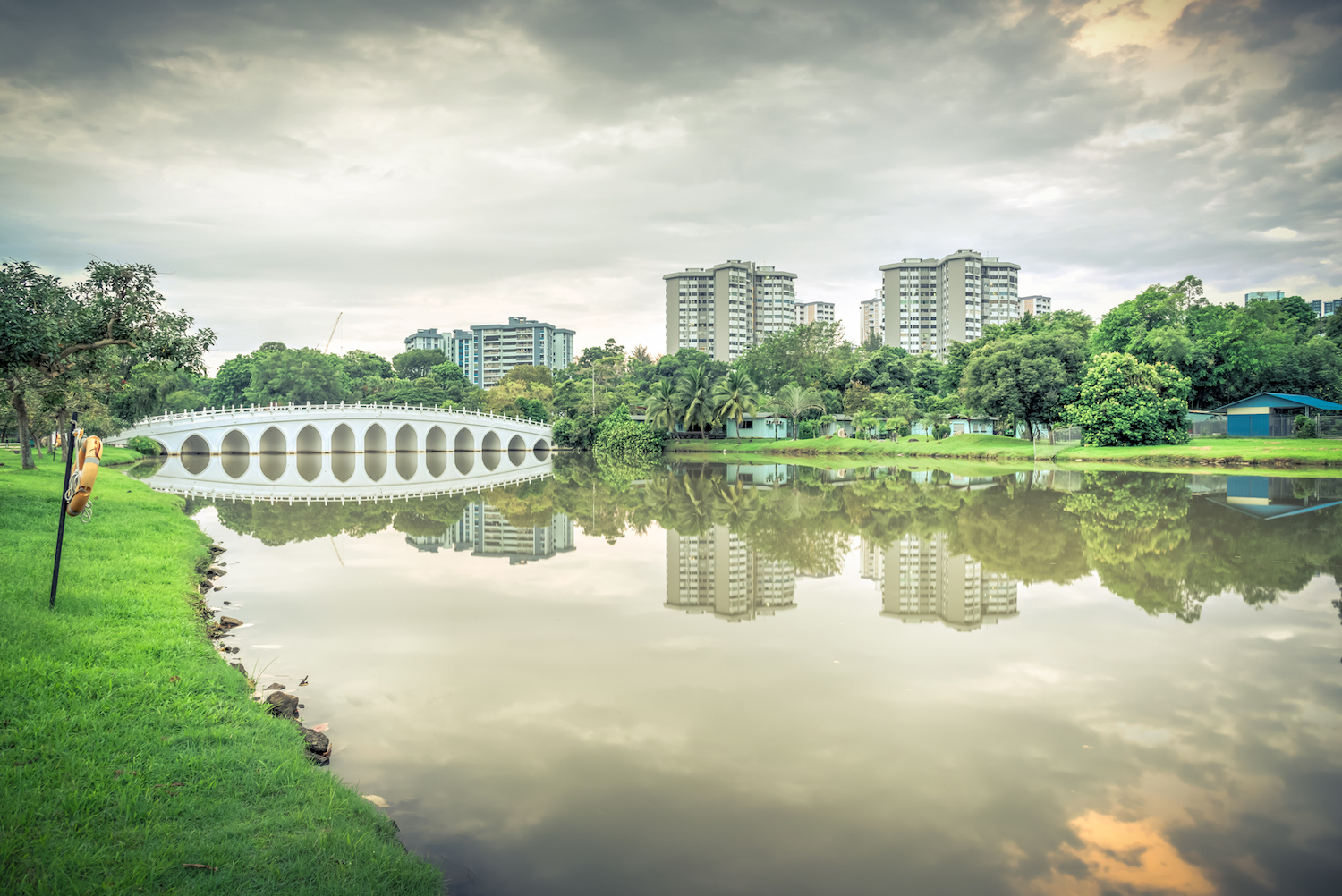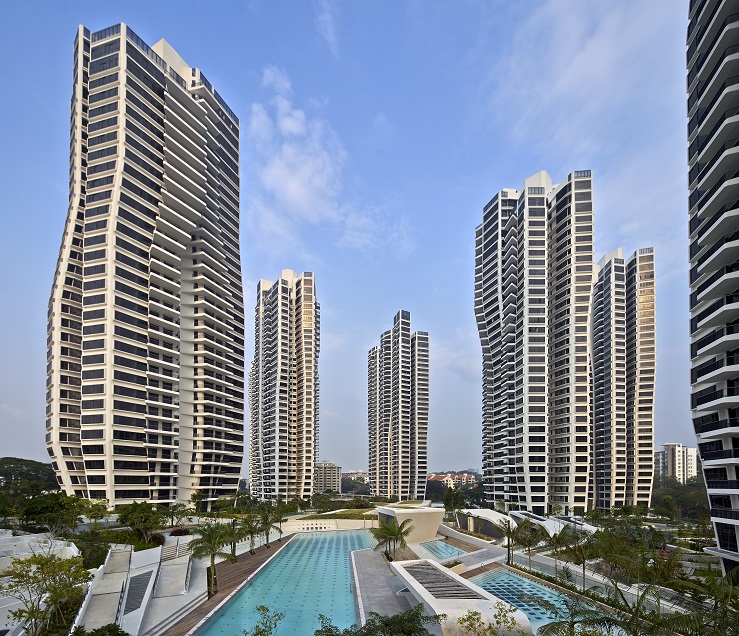SINGAPORE — Should the Kuala Lumpur-Singapore
High Speed Rail (HSR) project – which had been touted as a game changer by
Malaysia and Singapore leaders – be abolished, investors and homeowners in
Jurong can no longer expect property prices to go up as quickly as they had
hoped, said experts.
However, they believe that significant
developments in the area such as the Jurong Lake District will help to bolster
demand and prices in the long run.
On Monday (May 28), Singapore property
owners, investors and developers were left reeling from Malaysian Prime
Minister Mahathir Mohamad's declaration that he wants to scrap the
multibillion-dollar rail project as part of measures to reduce his country’s national
debt.
He told the Financial Times that they had to
cut “unnecessary projects” such as the HSR which will cost the Malaysian
government RM110 billion (S$37 billion) and not “earn us a single cent”.
Singapore's Ministry of Transport said in response to media queries that it
would await official confirmation.
Nevertheless, experts TODAY spoke to played
down the impact of Malaysia’s about-turn on transportation infrastructure
between both countries. They said that while the rail project would be a bonus
in terms of offering faster and more reliable travel, the average commuter
currently already has a number of alternatives to get to Kuala
Lumpur.
However, there will be lost opportunities for
businesses on both sides, said economists, as the project would have allowed
for better economic and financial integration of both countries.
Maybank senior economist Chua Hak Bin said:
“The HSR would have strengthened the economic and financial integration of both
countries. This would have facilitated the convergence of wages and expanded
the markets for companies.
“This will be a huge setback as lowering
transport and connectivity costs would boost trade and increase the flow of
talent both ways.”
In terms of the property market, return of
investments in Jurong is expected to take longer, and buyers who were banking
on rentals to Malaysian workers and tourists will have to adjust their
expectations, said property analysts after Dr Mahathir’s announcement on
Monday.
“Those who bought property in the Jurong area
with the purpose of investment would be disappointed as their investments might
only bear them good gains many years later,” said International Property
Advisor's chief executive officer, Mr Ku Swee Yong.
“Others who might have invested in small
retail units, and are banking on the day trippers from Malaysia to boost sales
may also have to adjust their sales expectations drastically.”
“Many people expected the high-speed rail to
turn Jurong around completely, so there will be some impact on prices, but
perhaps in the short term,” said Mr Chris Koh, director of property firm Chris
Koh International.
“The appreciation of prices may not be at
such a rapid pace than expected.”
However, experts said that the impact on
property prices and buyer interest is likely to be short term, with demand and
prices expected to pick up as the region is set to be rejuvenated as
Singapore’s “second financial district”.
The masterplan for the Jurong Lake
District was first released in 2008 as part of the Urban Redevelopment
Authority’s efforts to grow new employment centres outside the Central Business
District to bring more quality jobs and recreational options closer to
homes. The HSR project was officially agreed between Singapore and Malaysia in
2013.
ZACD Group executive director Nicholas Mak
said: “The health of the property market in Jurong does not depend on the
high-speed rail terminus.
“The region has its own attractions such as
the MRT interchange, new Jurong Regional Line, shops, offices and business park
that provide jobs and services... all these come about without the high-speed
rail.”
Plans for residential and commercial
developments are also unlikely to be redrawn, given that they were
conceptualised before plans to build the high-speed rail, said experts.
The Singapore Government first laid out its
blueprint for the Jurong Lake District in 2008 as part of the Urban
Redevelopment Authority’s efforts to grow new employment centres outside the
Central Area to bring more quality jobs and recreational options closer to
homes.
First discussions for the HSR began in 2013
between Prime Minister Lee Hsien Loong and his former Malaysian counterpart
Najib Razak, before the bilateral agreement was signed in December 2016.
Overall, buyers and developers will be more conservative
going forward, said analysts.
“Developers will be a lot more careful and
less aggressive with their bid price going forward,” said Mr Ku.
Mr Koh added: “If I’m a developer, I will not
be banking on the high-speed rail to market property anymore, but I would
rather sell the other merits of Jurong such as the Jurong lake district and
other amenities in the region.”
The HSR, which would have cut down the travel
time between Kuala Lumpur and Singapore to 90 minutes, would have provided a
better travel option for commuters, said transport experts. However, while they
felt it was a “good thing to have”, its loss will not be so keenly felt.
“The project was never about expanding travel
capacity between the capitals, it was about providing a better travel option
than air and road,” said Singapore University of Social Sciences (SUSS)
transport economist Walter Theseira.
“Certainly there will be some integration
between the high-speed rail and the Jurong East area, but I doubt our rail
projects like the Jurong Regional Line will be affected as our MRT plans are
not conceptualised to hinge on the HSR project.”
SUSS’s urban transport expert Park Byung Joon
said that minor operational adjustments to connecting trains running from the
Jurong East terminus might have to be made as there would be less human
traffic.
Dr Park added: “Overall, it’s a good thing to
have, (but) it hasn’t happened yet so there is no real loss.”
S'POREANS 'DISAPPOINTED'
Some Singaporeans were dismayed to hear about
the cancellation of the rail project.
Singaporean resident Shayne Ow, 24, is
engaged to a Malaysian who lives in Kuala Lumpur. She said: “I am disappointed
with the cancellation as it would have been more convenient for me and my
fiance to travel back to Malaysia during important days like Chinese New Year
when a four hour bus ride can take up to 12 hours due to traffic jams.”
Others, however, said they are not too
bothered by the scrapping of the HSR project as they do not commute to Malaysia
often.
Jurong resident Tan Jie Yong, 25, said: “I
don’t think it affects me much because I don’t go to Malaysia often.”
But others like Miao Tian, 30, said that the
HSR would be a more convenient travel option as compared to buses.
The civil servant was not too concerned about
property prices dipping. She added: “I bought my flat with the sole purpose of
living in it, so I did not expect the price to rise.”
Some experts also cast doubt on whether the
project is really dead in the water.
Dr Theseira said: “I don’t think the project
is dead permanently, for all we know, the project could be revived when Anwar
takes over in two years’ time.”
He also added that in the long run, as
countries in the region become more affluent and trade increases, an “upgraded
rail line” that provides connectivity would be “an obvious infrastructure
project that all (Asean) countries would be interested in, if the price was
right”.
Agreeing, Dr Chua added: “Malaysia may
revisit the project once fiscal finances are in a healthier state.” ADDITIONAL
REPORTING BY CHEN LIN AND JUSTIN ONG
Source: TODAY






